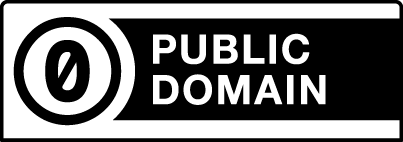Engrave two-tone signs with the F1 Slide Extension


Information
One of the best-kept secrets of the F1 engraver is the Slide Extension accessory. It enlarges the engravable area by nearly four times horizontally. I've been using it recently to create signs and other projects.
This project creates a (roughly) 2 x 8 inch (200mm x 50mm) sign from two-tone acrylic—the kind of material you see at office doors or used for desktop nameplates. You engrave the top layer (in this case white) to reveal the color underneath (navy blue here).
These plates are quick and easy to create, and I have to imagine they could be a decent money maker, particularly if you could get a gig as the standard engraver for a business or school.
The attached XCS project file includes two examples.
Instruction
Step1: Connect and calibrate Slide Extension
Before you can use your F1 Slide Extension, you need to make sure it's connected and calibrated. Connect the cable to the side of your machine, then select the Slide Extension as the processing type. Click to banner to start the calibration process, which amounts to properly aligning the slider over the F1 baseplate and affixing it with built-in screws.
Step2: Create your sign content
For this project, We're creating an engraved sign on a standard 8 x 2 (200mm x 50mm) two-tone acrylic blank.
I usually start most projects by drawing out the bounding area. So using the shape tool, I create a rectangle that's exactly 200 x 50, then move it to the left edge and center it vertically. I like to put all bounding/framing elements on the Orange layer, so I change that and ensure that power is as low as it can go (1%) and speed is the fastest (160 with the Slide Extension). This way there's little change of messing up my project if I forget to disable the Output setting for this object.
Now add text to the sign and align it as you'd like within the bounding box. Don't forget to leave some margins. Set the text to Engrave. I chose settings I know work best for my material. Blue laser at 30% and 140 mm/sec, using 200 lines/cm. You may want to select the reference settings for one of the two-tone materials in the material database or do some testing of your own to tune them as you'd like.
Step3: Frame your engraving
Place your sign blank, centered vertically, against the left measurement gauge. Then adjust the knob to focus the beam on the material.
Framing on the F1 Slide Extension is an unusual process. When you start framing, the F1 will show a frame around the area that will be engraved that's currently under the laser. Turn the focus knob to move the slide under the beam. The bounding area will change as you slide left and right to the end of the material. It's hard to describe, so I'd recommend watching the video I posted, above. Adjust the placement of your material accordingly, then use the material clamps to secure it.
Now go back to XCS, disable output for the bounding box, and frame again. This time, you'll see where the sign contents will engrave as you move the slide left and right. Ensure that your clamps aren't overlapping any of the engraving area.
Step4: Process and clean
The Slide Extension clamps stick up from the engraving surface, so you can't pull the protective enclosure of the F1 all the way down. Be sure to leave enough room for the clamps and thumbscrews to slide under without scraping or hitting the enclosure. And since you can't pull the cover all the way down, you should wear your green laser safety glasses and ensure no other people or pets are nearby or could walk by unexpectedly.
Process, and you'll see the slide move left and right to move the material under the laser, which remains fixed in the center position of the engraving bed.
Once the engraving is complete, remove the sign from the clamps and wipe it with a microfiber towel or wet cleaning wipe.
I use clear double-sided Gorilla Tape to adhere these signs to outside surfaces, but you could use whatever method you prefer for your purposes—tape, glue, or even adhesive magnets.

